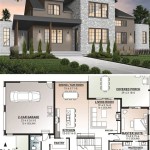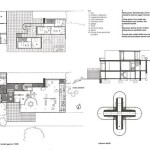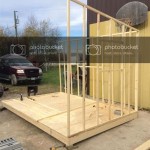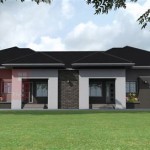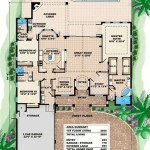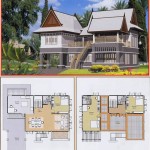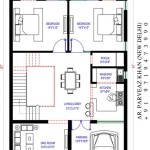Floor Plans: The Foundation of Building Your Own House
The floor plan is the blueprint of your dream home, meticulously crafted to accommodate your lifestyle and create a space that's uniquely yours. When it comes to building your own house, the floor plan is the cornerstone that will guide every aspect of construction and lay the foundation for years of comfort and joy. Here are several essential aspects to consider when designing your perfect floor plan:
Functionality: A well-designed floor plan prioritizes functionality, ensuring that the flow of traffic is seamless and that each room has a clearly defined purpose. Consider the way you live, the activities you engage in, and the way you want to use the space. The layout should facilitate effortless movement between rooms and eliminate any bottlenecks or awkward transitions.
Zoning: Zoning refers to the logical division of space within your floor plan. Create distinct zones for different activities, such as a sleeping zone (bedrooms and bathrooms), a living zone (living room and dining room), and a working zone (office or study). This zoning helps streamline daily life, ensuring that each zone is cohesive and tailored to its specific purpose.
Traffic Flow: The floor plan should prioritize smooth traffic flow, allowing for easy movement between rooms without creating obstacles or bottlenecks. Consider the natural flow of people through the space and avoid creating dead-end hallways or rooms that are difficult to access. A well-thought-out traffic flow enhances both the functionality and the overall comfort of your home.
Natural Light: Natural light has a profound impact on the ambiance and livability of your home. When designing your floor plan, incorporate ample windows and skylights to maximize the flow of natural light into each room. Consider the orientation of your home on your property to take advantage of sunlight at different times of the day.
Storage and Space Planning: Adequate storage is essential for a well-organized and clutter-free home. Plan for ample storage solutions throughout your floor plan, including built-in cabinets, closets, and shelves. Consider the specific storage needs of each room and design accordingly, ensuring that every item has a designated place.
Outdoor Connection: A connection to the outdoors enriches the living experience and enhances the overall appeal of your home. Incorporate outdoor spaces into your floor plan, such as patios, decks, or balconies. These spaces provide seamless transitions between indoor and outdoor living, creating a sense of openness and expanding the functionality of your home.
Energy Efficiency: In today's world, sustainability is paramount. Consider energy efficiency when designing your floor plan. Incorporate energy-efficient features such as proper insulation, high-performance windows, and a well-designed HVAC system. These features contribute to a more comfortable living environment while reducing energy consumption and lowering your utility bills.
By carefully considering these essential aspects, you can create a floor plan that perfectly aligns with your lifestyle and aspirations. Remember, the floor plan is the foundation upon which your dream home will be built, so take the time to thoughtfully plan and design a space that will bring you joy and contentment for years to come.

Easy To Build Houses And Floor Plans Houseplans Blog Com

Easy To Build Houses And Floor Plans Houseplans Blog Com

Make Your Own Blueprint How To Draw Floor Plans Drawing House Sketch Plan

Floor Plan Creator And Designer Free Easy App

House Plans How To Design Your Home Plan

Floor Plans Build On Your Lot Custom Home Builder New Construction Design Tech Homes Builders

Make Your Own Floor Plans

Why Is A Floor Plan Important In Building House Ch

Est House Plans To Build Simple With Style Blog Eplans Com

Easy To Build Houses And Floor Plans Houseplans Blog Com

